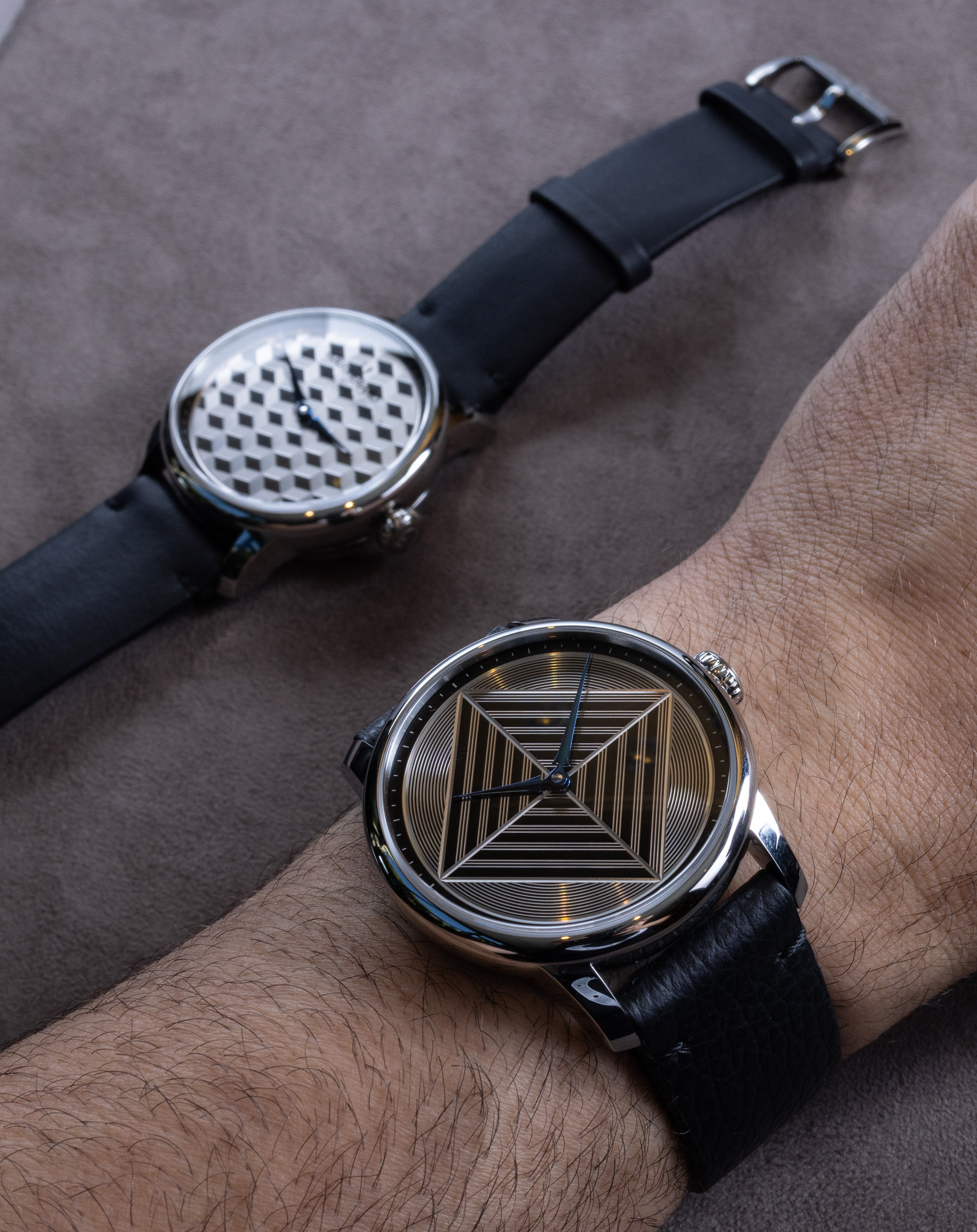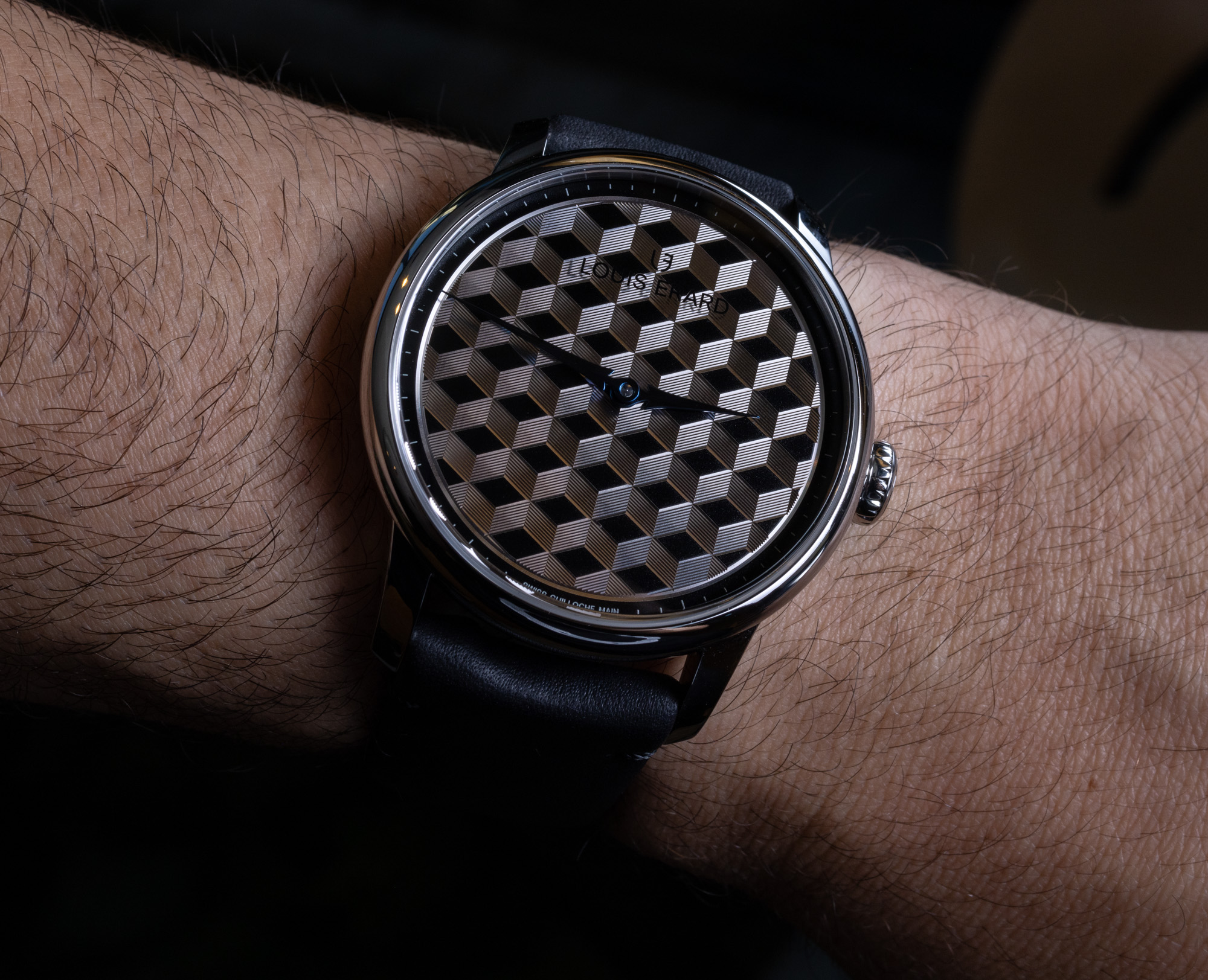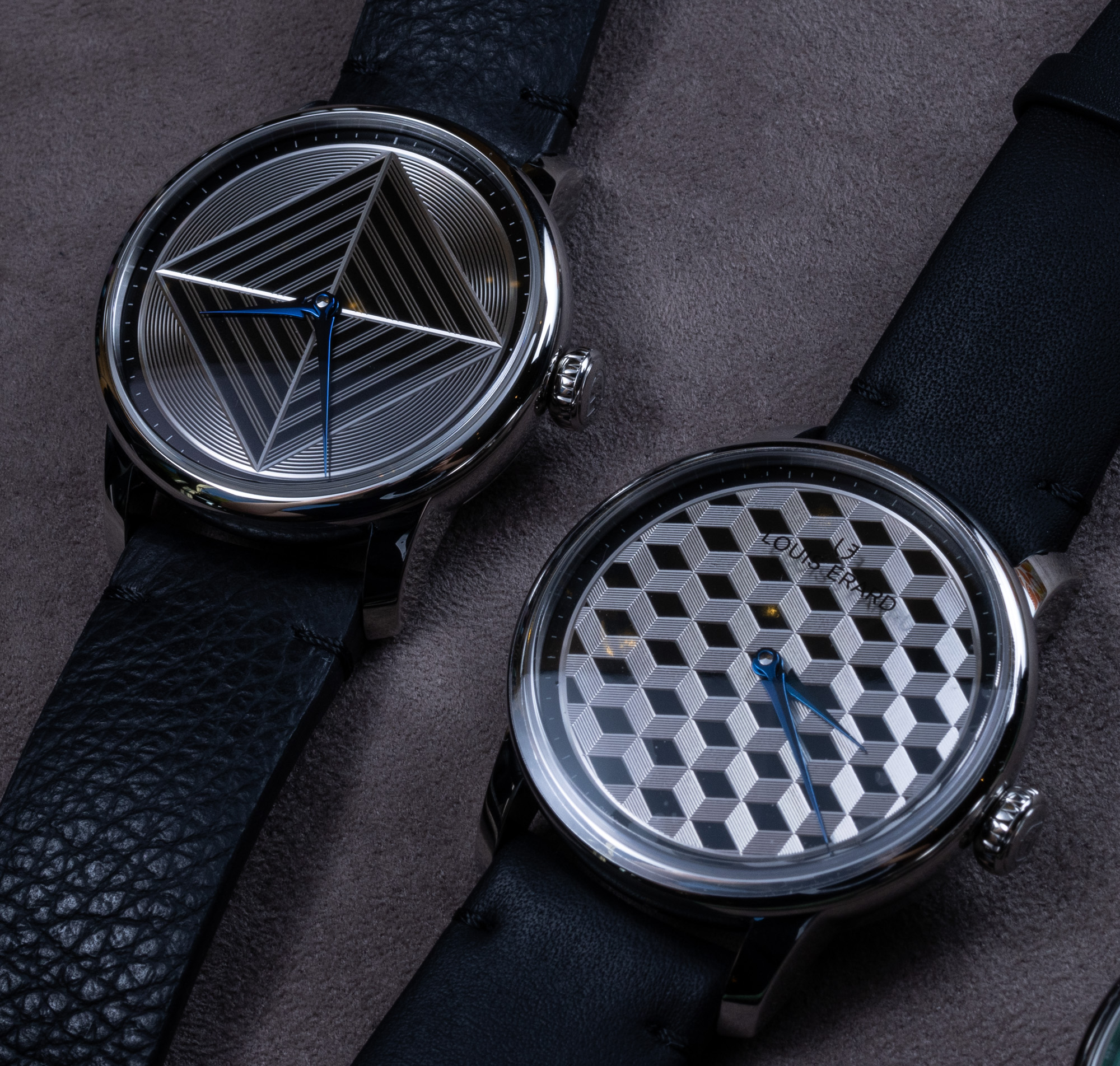Hands-On: Louis Erard Excellence Guilloché Main I & II Watches
We live in a golden age of options when it comes to watches with endless variety in price, materials, and quality, but there is still a bit of homogeny. Derivative design language is rampant in almost every tier, though few and far between are the brands that stand out for their ability to produce intriguing designs that make you question how to read time and, in some cases, reality itself. Louis Erard is one of these brands. Whether it is minute-prioritizing regulators or a tongue-in-cheek collaboration with Seconde/Seconde, Louis Erard is always set to please. The Excellence Guilloché Main I & II watches dial back (pun intended) all the playful elements found in the collection to allow the trompe-l’oeil (incredibly realistic optical illusions) guilloché dials to take center stage.
The effort Louis Erard has taken with the Excellence Guilloché Main Limited Editions to bring the artisan craft of rose engine-turned dials – and other specialized dial creation techniques – into the realm (and price range) of mere mortals cannot be understated. Guilloché is a craft that can be executed properly by an incredibly small number of artisans around the world, and the creation of a new pattern required the reconstruction of the rose engine. The cams and stencils need to be manufactured individually to produce a new design, and the entire process reportedly can take six or more months or perfect. Limiting these watches to 99 pieces provides a rare and special experience for the owners.

The foundation for the Excellence Guilloché Main I and II watches are the same with astoundingly different executions, and if given the choice between the two, I would be hard-pressed to choose one over the other, but I will try to help you choose. A black lacquer varnish covers the dial, and the engraving process reveals the brass plate beneath, which is then plated with rhodium to create a patinated silver luster that reveals an alluring and sometimes dizzying pattern, depending on your perspective. First up is the Main I, which features a nine-band pattern that zig-zags across the dial, and with each pass reveals a dark rhombus between the layers. The resulting pattern can be interpreted however the wearer views it, and with changes in lighting and the angle from which it is viewed, the interpretation changes. I see a tesseract at some angles, an endless staircase from others, and sometimes even the staggered boxes from 1982’s Q*bert. Over the dial are blued steel hands that disappear in certain light, making time telling difficult but allowing the dial to be fully appreciated. Additionally, a sapphire crystal bears the Louis Erard name and logo on its underside. This technique allows the dial to maintain its artistic integrity and created a pleasing three-dimensional effect with the shadow it created.
The alternating perspectives are not quite as present in the Excellence Guilloché Main II, but they are still observable. With a large diamond consisting of identical triangles whose vertices meet at the center of the dial and cardinal points of the dial, the illusion of looking down at the peak of a pyramid is most prominent. Surrounding, and seemingly below this pyramid are concentric circles that fill the void that would be each quarter of an hour. The same blued steel hands are found in the Guilloché Main II but the dial is devoid of branding on the dial and crystal except for the text Swiss GuillochéMain at 6 o’clock. While the branding blends into the design of the Main I, it would certainly be obtrusive to this second design. Both watches also feature a minimal minute track around the permitter of the dial, allowing for accurate time-setting and -telling despite the complex dial designs.

One dynamic element of a high-contrast guilloché design that cannot be easily conveyed in photos is how the rhodium highlights play with and are manipulated by light. Multiple color temperature lighting situations provide additional layers of depth and create an absolutely mesmerizing experience.
One of the most profound effects of a highly decorated dial is its wearability, and how it changes the perception of size. Often a watch with a wide-open dial and slim bezel will wear larger than its dimensions suggest, and a lighter-colored dial will emphasize this more. However, despite being cased in highly polished 42-mm steel, the Louis Erard Guilloché Main watches wear smaller than their dimensions suggest. They are by no means small watches, but those who are wary of non-sports watches over 40mm will be pleasantly surprised. A 49.5mm lug-to-lug, and 12.2mm thickness also make this an excellent watch to slip under a cuff without much trouble, though personally, I would not want to hide these dials under one.
Visible through the sapphire caseback is the tried and true Sellita SW261-1 movement, which provides about 38 hours of power reserve. However, in comparison to the dial side of the watch, the movement is quite plain. Aside from a Louis Erard-branded rotor, the movement has no special finishing and leaves you wanting a little more pizzazz to match the dial. This isn’t a watch you are buying to show off the movement, anyway. Coming on 22m black leather straps, nubuck and grained calf leather respectively, the slight taper keeps the eye focused on the watch. I prefer the plainer-textured leather, as it doesn’t distract and overwhelm your senses when you get lost checking the time.

All in all, the Louis Erard Excellence Guilloché Main I & II watches are a feast for the eyes. The brand’s efforts to bring high-end dial-making techniques generally found on watches over $10,000 is truly something special. While it’s limited to 99 pieces, the odds of running into someone with the same watch are infinitesimal and the enjoyment of a dial that will intrigue even the most watch-averse is exponential. Priced at just over $4,200 USD, the Louis Erard Guilloché Main I and II are, by definition, wearable art. Learn more about these unique watches and more at Louis Erard’s website.

